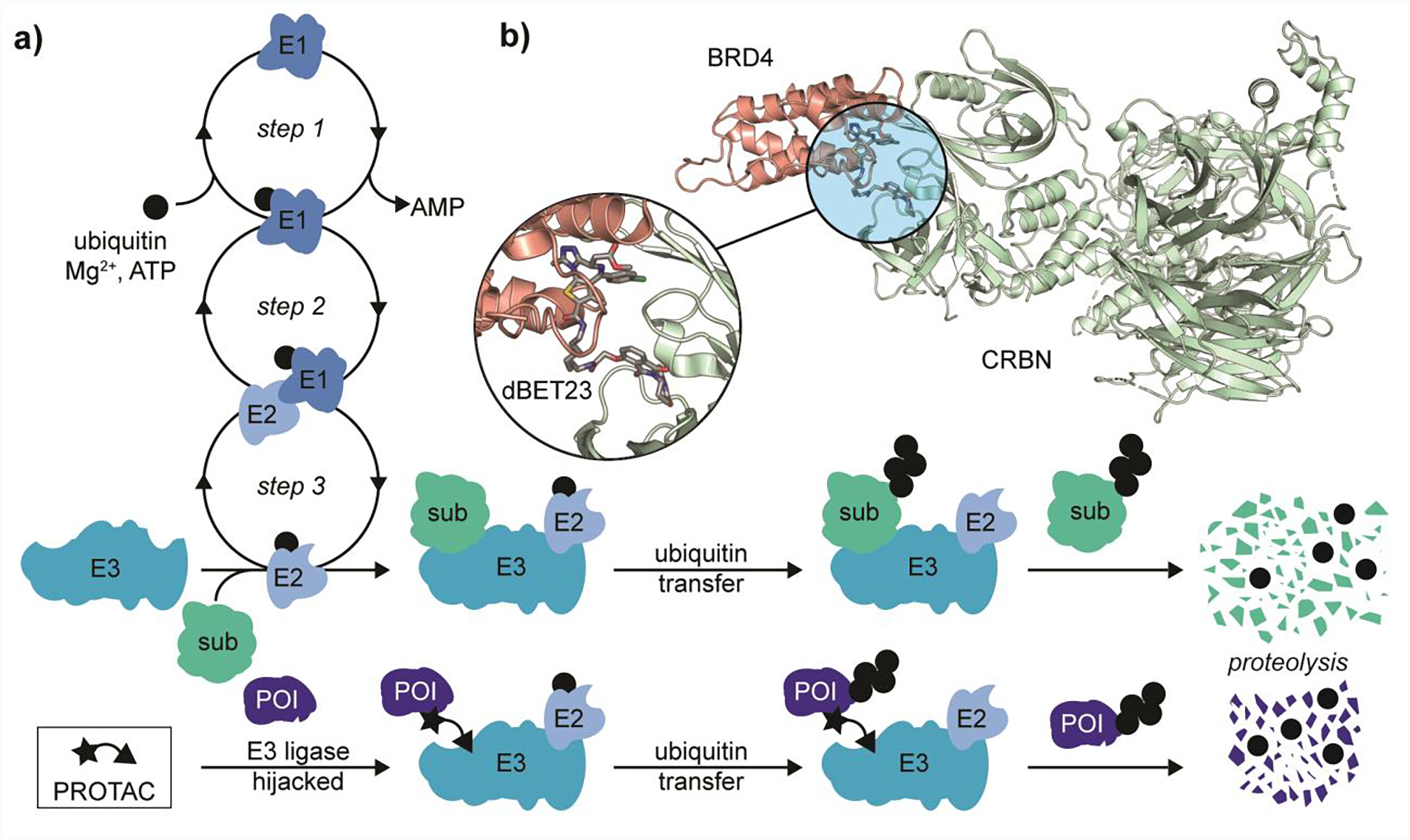Figure 1.

Metabolic activity of a PROTAC. a) Representative comparison of UPS pathway for cullin–RING E3 ligases in both the presence and absence of PROTAC molecules. Step 1: ubiquitin activation by E1. Step 2: Engagement of ubiquitin loaded E1 with E2 conjugating enzyme. Step 3: transfer of ubiquitin to E2 via trans–thioesterification and subsequent formation of E3 ligase complex. Introduction of PROTAC molecules can redirect the E3 ligase from its cognate substrate (sub) to a non–cognate protein of interest (POI). b) Representative example of a non–cognate ternary complex formed by the PROTAC dBET23, bromodomain BRD4, and E3 ligase substrate binding domain CRBN (PDB 6BN7). Note: E3 cartoon represents a multi-component complex in which the PROTAC is able to bind the substrate adapter protein in order to redirect its metabolic activity.
